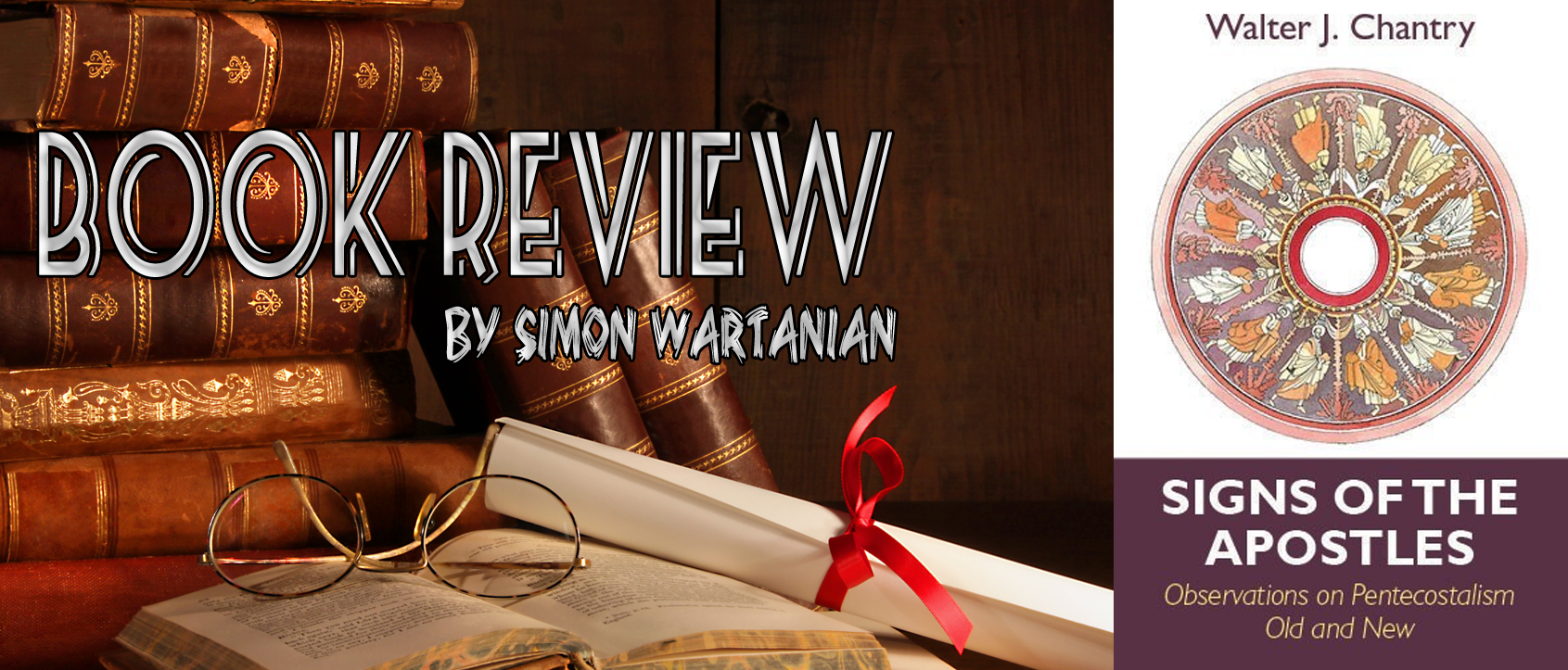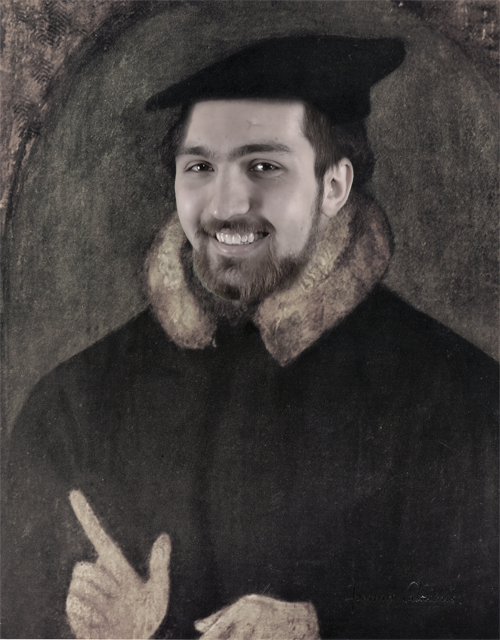Signs of the Apostles
Observations On Pentecostalism Old And New[1]
My feelings are mixed concerning this small volume. I believe that his case for cessationism did not stand. I believe that he misused some passages to make his case. Here are a few things that raised my eyebrows.
First, he argues that miracles were given for attestation from the narrative of Moses (Ex 4:5) and NT. No one disagrees, but he makes attestation the primary purpose of miracles. And not simple attestation, rather attestation for prophetic ministry. Miracles were connected with the prophets as he tries to argue from Ex 4:5 and Deut 34:10-11 (later from Elijah's example in 1Kings 18:36). But then he raises the anticipated objection about the miracles of Samson or the other prophets, his answer is not satisfying. He basically says that the "history is incomplete" (p. 11), i.e. we do not have everything that they did, therefore, they must have done some prophetic stuff as leaders of God's people. That is unsatisfactory.
Second, he uses Psalm 74:9 to say that "This is a striking endorsement of the principle that only prophets work miracles. Where miracles are performed we should expect to hear the inspired Word of God spoken. When there is no prophet, there are no signs." (p. 12)
Here pastor Chantry understands the signs to refer to the miracles of the prophets. But I believe what is a more proper sense of the verse is to speak of the Temple. The enemies of Israel as they are described in verse 4 "have roared in the midst of your [God's] meeting place; they set up their own signs for signs." The enemies of Israel have set up their own things in the Temple of God as signs. But now destitute of the Temple (in the time of the exile), the Israelites do not have their signs, i.e. the ark, the sacrifices, the temple which pictured to the people the presence of God among them.
Whatever the sense of the text, this does not have bearing upon the miracles when we come to the NT as on Pentecost when they were to be poured out on all people (Acts 2:17ff).
Third, he uses Galatians 3:5 to say "Paul appealed to his miracle-working power as evidence that he, rather than the Judaizers, ought to be believed." (p. 15) Where does Paul fit into the text? The text reads "Does he who supplies the Spirit to you and works miracles among you do so by works of the law, or by hearing with faith— ". Can it be that this is based upon the assumption that only the apostles can work miracles while the verse doesn't say a word about such a thing?
Fourth, he limits the scope of Hebrews 2:3-4 to the apostles though he does not explicitly say that (pp. 15-16). But the text does not reject the present work of God among the Hebrews, it simply highlights God's work among the Apostles.
Fifth, he anticipates the objection of non-apostles doing miracles and he raises the case of Philip in Acts 8:4-15. Then there's some weird comment about the people to whom Philip had preached that "[c]ertainly the true converts among them already had God's Spirit in their hearts, for [citation of Rom 8:9]" (p. 17). This was a first time for me, usually people explain it in terms of the foundational period of Acts and the primacy of Apostles that the believers did not receive the Spirit.
He accepts that Philip did actually perform miraculous deeds as the Bible obviously says (Acts 8:6-7), but then objects that it was the Apostles and not Philip who had the prerogative of ministering the miraculous gifts to others. "Every recorded instance of men in the church receiving such gifts occurred under the direct ministry of an apostle. Thus even the general exercise of miraculous powers within the church served as a testimony to the prophetic authority of the apostles." (p. 17)
I particularly do not find such argumentation strong enough. What about the believers elsewhere in Corinth, Rome or Thessalonica? And is it surprising that almost everyone (if not everyone, I'm not sure) in Acts was somehow related to the Apostles? I mean, the book is primarily about Paul and the work of the other apostles, so obviously they would be related to them. It is not for nothing that we call the book the ACTS of the APOSTLES.
Sixth, when I picked up the book I was interested to see what he had to say on 2 Cor 12:12 from which the title of the book comes. I was surprised to merely find a paragraph! He says that Paul "considered miraculous gifts as God-given proof of an apostolic ministry." (p. 15) But the passage does not connect the "signs and wonders and mighty works" to the "signs of a true apostle." Yes, Paul did do those things, but these were not the signs of his apostleship, rather as Dr. Sam Storms observes, the signs of him being a true apostle consisted in:
(a) the fruit of his preaching, that is, the salvation of the Corinthians themselves (cf. 1 Cor. 9 : l b - 2 , "Are not you the result of my work in the Lord? Even though I may not be an apostle to others, surely I am to you! For you are the seal of my apostleship in the Lord"; cf. 2 Cor. 3:1-3); (b) his Christlike life of holiness, humility, etc. (cf. 2 Cor. 1:12; 2:17; 3 : 4 -6; 4:2; 5:11; 6:3-13; 7:2; 10:13-18; 11:6,23-28); and (c) his sufferings, hardship, persecution, etc. (cf. 4 : 7 - 1 5 ; 5:4-10; 11:21-33; 13:4). Paul patiently displayed these "things that mark[ed]" his apostolic authority. And this was accompanied by the signs, wonders, and miracles he performed.[2]
Seventh, he believes that the "perfect" of 1Cor 13:10 was the completion of the NT canon. He appeals to 1Cor 14:20 where the word telios is translated as "mature" instead of "perfect" to claim that when the Scripture were completed the church outgrew the "childhood of charismatic revelations." (p. 44) Not referring to the present day Charismatics, but the way he understands Paul when he speaks of being a child (v. 11). Verse 11, according to Pastor Chantry speaks of the time before the NT canon was complete, before 95 A.D. with the last book of the NT, the Apocalypse. It is that time in the words of verse 12 that they looked in a "mirror dimly," but after the arrival of the full canon of Scripture we now see "face to face." He appeals to Num 12:6-8 to argue that the Lord spoke clearly and mouth to mouth (or face to face) to Moses and therefore (he does not explictly say this, but I believe he assumes it) what God delivered to Moses, Moses then in turn spoke to the people and it became Scripture. I don't believe that this is a proper use of this passage. The Lord had clearly favored Moses and had an intimate relationship with Him as a friend of His. The text also says the Moses beheld the form of the LORD. He saw God. Moses spoke face to face (Ex 33:11) with God. This is not what we have in Scriptures. I will not deny that God speaks and reveals Himself to us in the Scriptures, meditate on 1Sam 3:21, but that revelation of Himself is "sufficient for every good work" (2Tim 3:16-17), yet not a complete face to face and mouth to mouth relationship which we await in Heaven.
This passage most naturally refers to when we go to Heaven to be with the Lord; or better when the Lord comes. It speaks of the condition of our relationship when we are no more away from the Lord. Richard Gaffin who made a very good case for Cessationism in Are Miraculous Gifts For Today? says in a footnote, 'To argue, as some cessationists do, that "the perfect" has in view the completion of the New Testament canon or some other state of affairs prior to the Parousia is just not credible exegetically.'[3]
There were some other things or usages of Scripture which I did not think were proper, but these were the big ones that stood out.
This work is not scholarly. It does not engage with those who are respectable representatives of the position being critiqued, but it is a popular level treatment of how and what the average Charismatic/Pentecostal believes, behaves and says. At some points I could "amen" his criticism of what is reported in such circles and their behaviors and the diminishment of God's infallible Word. But I was not convinced of his cessationist case.
Be critical, look up the references of Scripture in their context and carefully study this book.
Footnotes
© 2016 by Simon Wartanian




